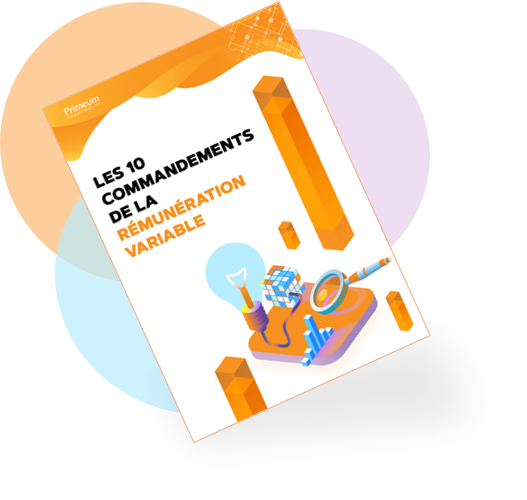“When you say hello properly, you can see the other person become aware of themself as a phenomenon, you reveal yourself to them, and you’re ready for them to reveal themself to you.” Eric Berne
The concept of strokes was developed by Eric Berne, founder of Transactional Analysis. Initially seen as a unit of recognition to be used in the workplace to enhance employee commitment, strokes are proving equally relevant in work from home (WFH), when teamwork is put to the test. In the following article, we introduce you to strokes for motivating your WFH teams.
Show your appreciation with strokes!
Employee commitment refers to employees’ motivation and their connection with their company, which are essential to the Hogan Assessments survey on work from home in Europe.
The verb “to stroke” usually means “stroking in the direction of the hair.” In a somewhat reductive way, it is based on the principle that showing signs of recognition to an employee will contribute to their well-being at work and thus maintain their level of commitment and motivation.
A stroke is an action of recognition. Examples include saying hello, congratulating someone, awarding a work medal, offering gift vouchers, paying a compliment and inviting teams to lunch in a restaurant or offering an end-of-year bonus.
However, Eric Berne goes much further in his analysis, since he also believes a negative stroke, such as giving constructive criticism to an employee, is better than saying nothing or ignoring an employee’s work. Indeed, there is nothing worse than total indifference to discourage an employee.
There are four different types of strokes, but not all of them are good for you!
Eric Berne presents four different types of recognition: the positive conditional, which is given to acknowledge the positive work of an employee following a concrete and quantifiable action. This involves, for instance, congratulating an employee because they have successfully resolved a complicated situation or because they have met their targets. This type of stroke is used to value a result and to boost the employee’s self-confidence.
Incentive compensation is a positive conditional stroke: an employee’s remuneration is increased to reward a clearly quantifiable result such as an increase in turnover.
The positive unconditional is a sign of recognition that is used without any particular conditions of success; the employer simply congratulates the person for who they are, for their skills. For example, they might congratulate an employee on their positive day-to-day attitude or their ability to find solutions quickly.
The negative conditional stroke is form of constructive criticism of an employee for a specific result; maybe a presentation needs to be slimmed down or the manager needs to manage their department more efficiently. The idea is to straighten out the employee by using specific examples to help them improve without hurting their feelings.
Finally, the last type is the negative unconditional. This should be avoided as it is an attack on the employee’s integrity. It is when a staff member is criticised without a valid reason and in terms that are not very respectful, such as saying that they are incompetent because they were unable to act quickly in a given situation. This devalues the employee, makes them lose confidence and ultimately reduces their performance.
How can strokes be used to motivate teams?
Strokes must be used honestly, otherwise they lose their value. You shouldn’t use strokes all day long, for anything and everything, otherwise you will lose all their positive effects. Use strokes for specific points, at specific times.
Some strokes are more valuable than others. Saying hello in the morning is an act of recognition of the existence of the other person; it is a common positive stroke. However, this kind of stroke does not have the same impact as inviting the whole team to a restaurant to celebrate a success.
It should also be taken into account that each employee is different and has their own level of sensitivity. Some employees need a lot of strokes to feel confident, others need very few strokes or actually feel uncomfortable being congratulated. So you have to adapt to your target group to get the best results.
Is giving strokes at home impossible?
Employee commitment is mainly determined by the effectiveness of the Hogan Assessments leadership survey on WFH in Europe.
WFH has suddenly disrupted all our daily social interactions. Managers have had to learn to let go of control, reorganise supervision and, above all, they have had to find out how to keep employees committed remotely. In this professional chaos, recognition actions have been neglected, if not completely forgotten. But relying on strokes to keep employees committed when working remotely is even more useful! Some simple actions will help you keep your internal strokes KPIs (key performance indicators) in the black.
Create remote situations that allow strokes to be given
Strokes are given during social interaction. It is a moment of exchange between two employees. To give strokes remotely, you therefore have to maintain forms of social interaction and create situations that will contribute to these exchanges.
For common positive strokes, such as saying hello to each other, rely on some form of informal remote ritual: sharing a coffee by video call in the morning or starting on the work chat by greeting everyone. It is also during informal exchanges that you can give unconditional positive strokes such as: “The fact that you find it easy working from home shows you’re good at adapting” or “You’re full of energy in the morning, it’s nice.”
A formal exchange during a small meeting by video conference is a good place to give positive conditional strokes. For example, you can congratulate a colleague on the quality of their presentation, on how they manage their work from home, or the speed with which they prepare a report etc.
For negative conditional strokes – i.e. constructive criticism – such as pointing out that a presentation could have been shortened to keep the listeners’ attention, choose a one-on-one meeting.
Formal settings are conducive to sharing negative conditional strokes because they are a strictly business setting and there is less emotion involved. Meetings are generally used to make progress on issues, so criticism is more easily acceptable when it is justified and is followed by suggestions for improvement.
However, be sure to take into account the sensitivity of each employee and only make constructive remarks about brief, circumstantial facts that do not call into question an employee’s entire professional experience, so as not to shatter their confidence. Once the employee is alone again after the meeting, you don’t want them to start doubting all their work since joining the company.
Feedback is necessary, whether positive or negative, because from a distance we are often afraid that we are not doing enough, that our work will not be seen. Some employees will work hard to prove that they are working despite the distance. Positive feedback to show that the manager is satisfied with everyone’s involvement helps to avoid burnout.
Switch to “work appreciation” mode
From a distance, you will have to redouble your efforts to think about valuing the work. There are a number of ways of doing this: for example, offer a video conference to present the different departments within a company and their tasks. This is all the more effective if you have recruited remote staff who do not know the other employees well.
To highlight the work of each person, the manager begins the video conference with a description of each employee, highlighting two or three qualities and a positive professional anecdote for each one, and then proposes a time for discussion. The employees then ask each other questions about their respective assignments and thus develop more empathy towards departments whose difficulties they were previously unaware of.
Note that it is always easier to say positive things about another colleague than about yourself. This is why it is important that the description is done by a third party who can identify each employee’s qualities. Asking a colleague to introduce themself and mention a quality is putting them in an unpleasant situation because it is difficult to value yourself.
Give new responsibilities and celebrate victories to keep employees motivated!
Assign specific WFH tasks to the different employees to make them more responsible in this new situation: one person is responsible for the weekly reporting, another prepares the distribution of the workload, one employee takes care of calling the employees from time to time to discuss and get news etc. In this way, you enable employees to develop new skills and remain involved despite the distance.
Don’t hesitate to organise virtual events to celebrate good results or congratulate employees. Offer a virtual escape game for teams, a themed quiz night or offer a VOD subscription to the winning team.
What if you used incentive compensation to motivate your WFH teams?
WFH has grown to unprecedented proportions, requiring exceptional adaptability. When enforced, it can have extremely negative consequences on individual performance. It is therefore possible to reward employees with a special “work from home” bonus to recognise their efforts and thus maintain a high level of performance despite the current difficult climate.





